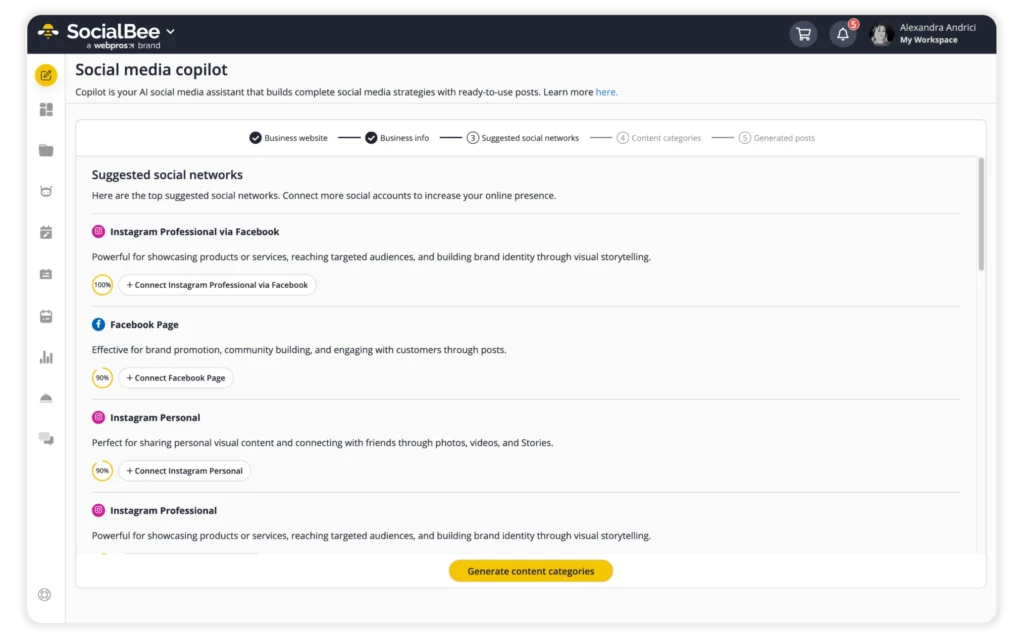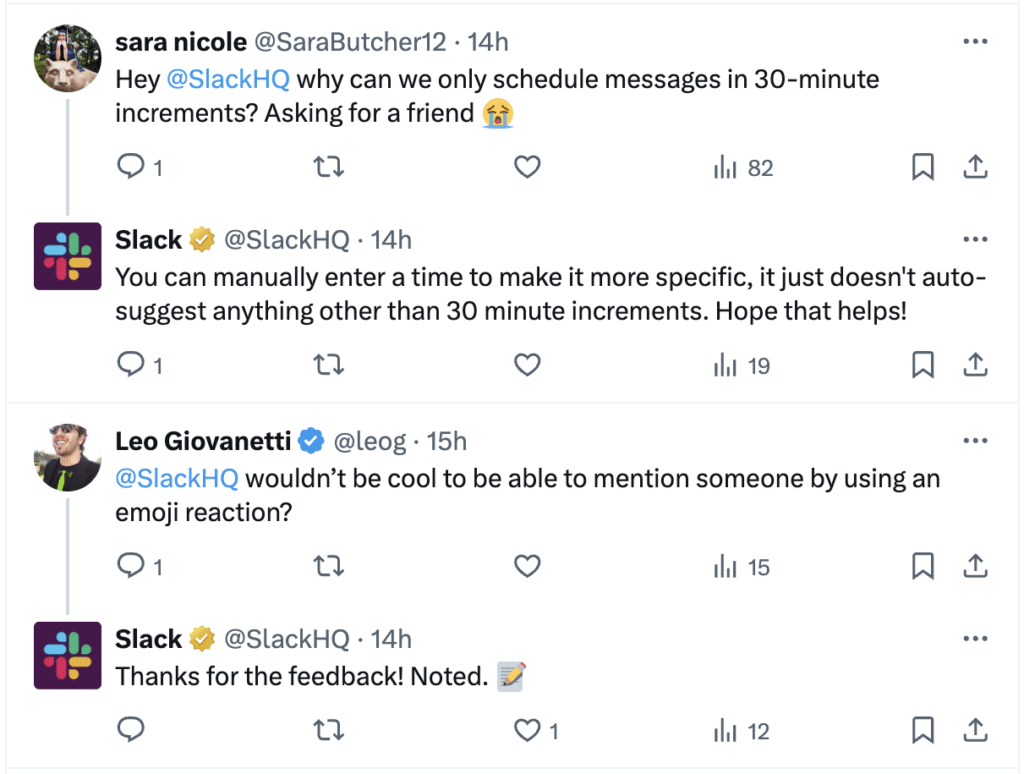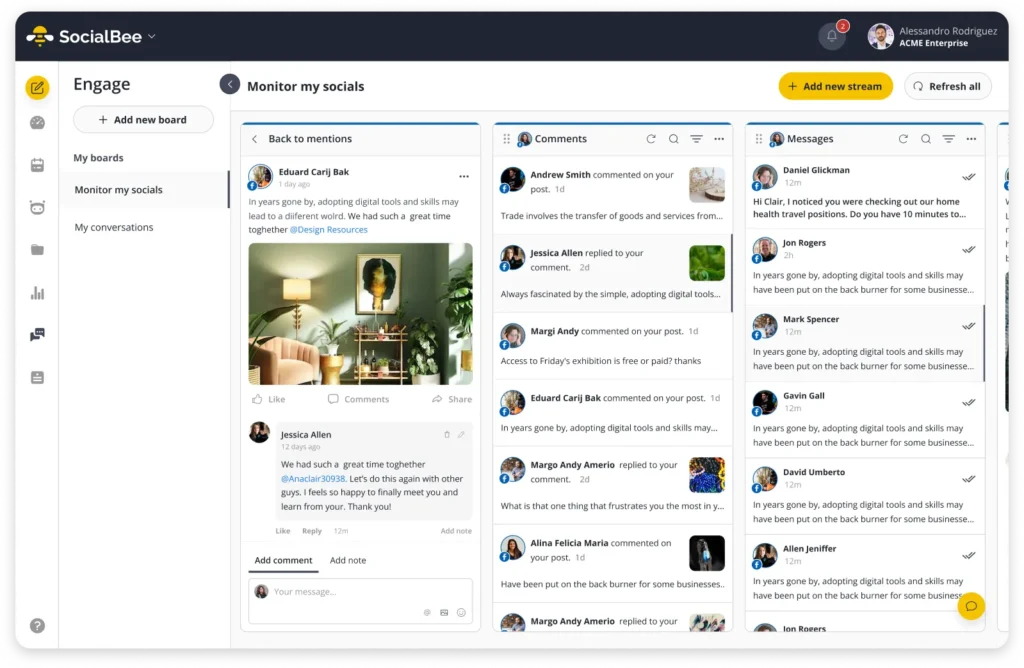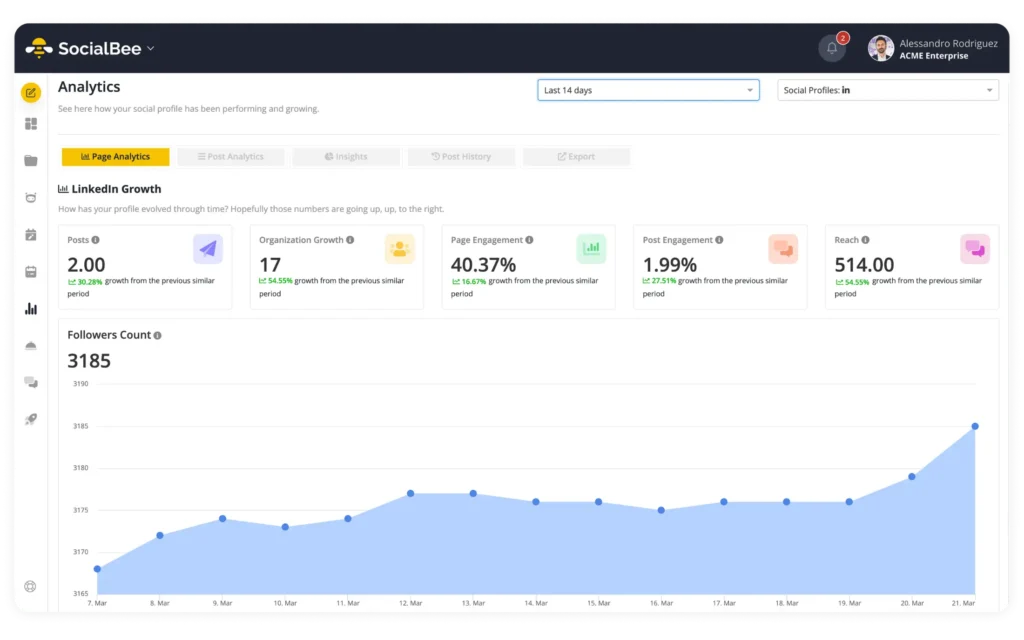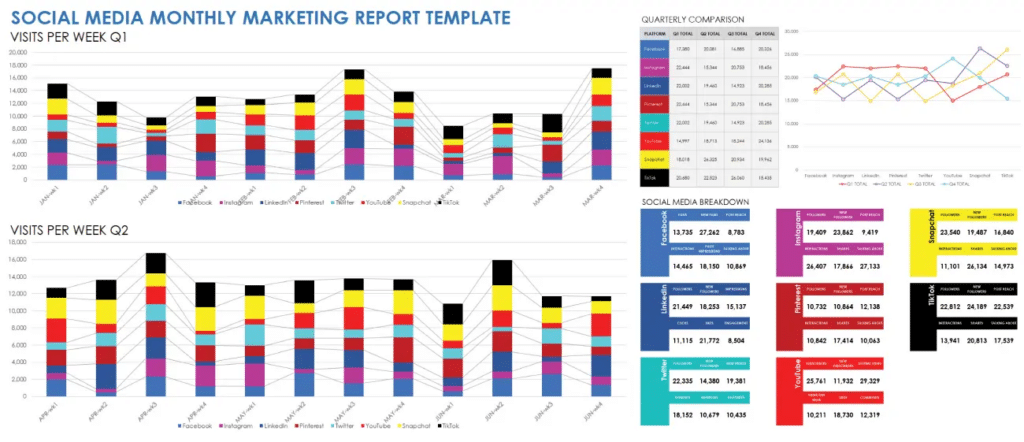
Guest Post
Are you sure your social media checklist has everything you really need to succeed? It’s easy to overlook important steps in the ever-changing world of social media, but having a solid plan makes all the difference.
This article is packed with a detailed checklist that aims to fine-tune your social media strategy, boost your engagement, and increase your reach.
We’ll walk you through some very important actions, from creating engaging content to analyzing your efforts, to ensure you’re making the most of your social media presence.
Let’s dive in and explore how you can amplify your success on social media.
We’re SocialBee LABS SRL, part of WebPros. We use the information you provide to share relevant content and product updates, as outlined in our Privacy Policy. You can opt out anytime.
Short Summary
- A social media manager is responsible for brainstorming ideas, building a content planner, creating content, tracking performance, and delivering customer support.
- You have to focus on content creation, scheduling, and engagement daily to succeed with social media marketing.
- Weekly tasks include analyzing marketing results, monitoring social media conversations around your brand, and researching competitors to determine your market position.
- Once every month, you need an in-depth performance review and engage in strategic decision-making for the upcoming months.
- Using the right software is super important when creating and publishing social media posts, and tools like SocialBee are needed to handle all moving parts of the process.
What Is a Social Media Checklist?
A social media checklist is a simple to-do list that helps social media managers keep track of important tasks.
It usually includes things like planning content, scheduling posts, responding to followers, checking analytics, and making changes based on what works best.
Using a checklist helps keep everything organized and ensures that nothing is missed.
Why Do You Need a Social Media Checklist?
A social media checklist is like your handy guide for keeping everything on track when you’re juggling posts, replies, and everything in between for all social media platforms.
Having a social media marketing checklist is useful for a few reasons:
- Stay organized: It keeps you from getting overwhelmed. You know exactly what needs to be done and when, so nothing slips through the cracks.
- Keep quality: It’s easy to rush things when you’re busy. A checklist reminds you to double-check your spelling, make sure the images look good, and ensure your message is clear.
- Stay true to yourself: Having a social media checklist helps make sure everything you post is really ‘you’ or fits your brand perfectly. It helps keep your posts in check with who you are, who is your target audience, and what your business stands for.
- Efficiency is key: A social media checklist really speeds things up. When you have a clear list of steps, you can zip through them and have more time for other things (like crafting even cooler content!).
- Avoid oops moments: A checklist is a safety net to make sure you don’t post something you’ll regret—like missing a critical hashtag, sharing on the wrong social media channels, or posting something that could be taken the wrong way.
What Should a Social Media Manager Do?
To create an effective social media management checklist, it’s essential to first understand the responsibilities of a social media manager.
A social media manager is typically responsible for performing these tasks:
- Build a content plan: Document ideas for social media posts and create a schedule for the month.
- Create designs and copy: Write captions and design creatives or videos, often using AI in marketing for fresh ideas.
- Identify trends: Keep track of what’s trending on each social media platform to create viral content.
- Analyze content performance: Track and report on content performance to refine strategies and drive leads into your sales funnel.
- Build influencer partnerships: Collaborate with influencers to produce impactful content.
- Manage customer grievances: Address user queries and provide quick support via social channels.
- Conduct a social media audit: Regularly review and assess the effectiveness of social media efforts.
- Utilize social media tools: Leverage tools for scheduling, analytics, and content creation. You can also use a social media scheduling platform to streamline your publishing process.
- Engage with followers: Respond to comments and direct messages to build community and loyalty.
- Run social media campaigns: Plan, execute, and manage campaigns to promote products or events.
- Track key performance indicators: Measure and analyze metrics to gauge the success of social media efforts.
- Monitor competitors: Keep an eye on competitor activities and strategies for insights.
Now that we’ve discussed what it takes to succeed as a social media manager, let’s examine the daily, weekly, and monthly tasks in a result-driven social media strategy.
Social Media Checklist: Daily Social Media Essentials
Staying organized and consistent is key to achieving success. Whether you’re a seasoned marketer or just starting, having a solid daily routine can make all the difference.
Here are four social media activities to perform daily:
- Content creation and curation
- Scheduling and posting
- Engagement and interaction
- Analytics review and trend monitoring
1. Content Creation and Curation
Most companies drop the ball when publishing social media content consistently.
Without consistency, your social media campaign efforts won’t produce the results you expect. That’s why you need a content calendar to organize your ideas effectively across multiple weeks and create a consistent posting schedule.
A good social media calendar includes:
- Channel: Which social media channels will the post go on?
- Day/date: What day and date do you want to publish your social media posts?
- Post time: What’s the ideal time you want to publish this post on your social media accounts?
- Post details: The copy, design link, and other crucial details for this post.
- Theme and format: What’s the content type and format this post is created for?
Plan your posts in no time with hundreds of post ideas and Canva templates. We’re SocialBee LABS SRL, part of WebPros. We use the information you provide to share relevant content and product updates, as outlined in our Privacy Policy. You can opt out anytime.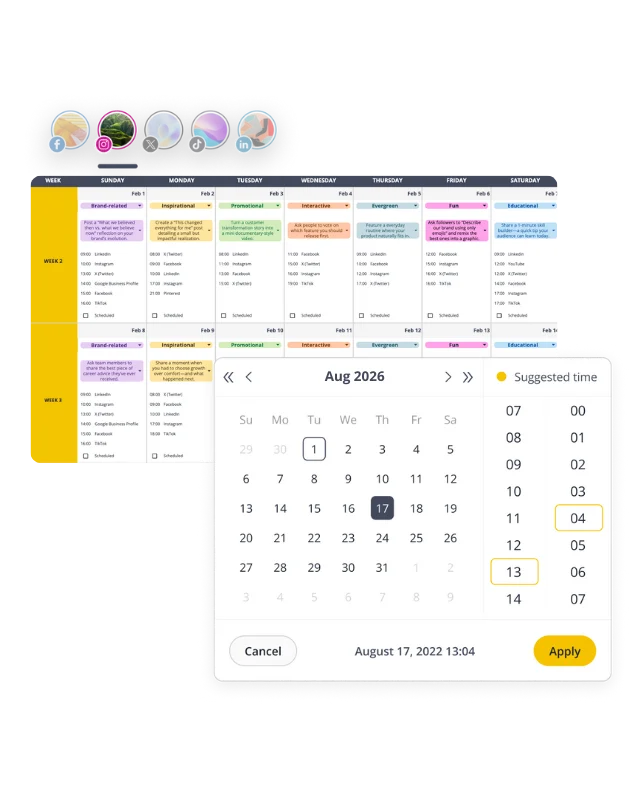
Remember that you don’t have to reinvent the wheel and develop net-new ideas every time you build a content calendar. You can also repurpose existing content creatively and make new posts from this exercise.
Damian Grabarczyk, the co-founder and growth marketer of PetLab Co., says,
“At PetLab Co., with over a million followers on platforms like TikTok and Instagram, we understand the critical role of a well-maintained content calendar in driving consistent engagement. Daily, we curate and create content that resonates deeply with pet owners, focusing on educational and engaging material.
Our content team meticulously plans each post’s channel, timing, and details, ensuring that our messaging is not only consistent but also impactful.
This disciplined approach allows us to maintain a steady stream of content that educates, entertains, and informs, solidifying our position as a trusted leader in the pet care industry.”
2. Scheduling and Posting
Building a consistent publishing cadence is the key to unlocking high ROI and sustainable results.
You must constantly experiment and monitor performance to identify the time slots when your audience is most active on a chosen channel. Then, schedule posts in these slots based on your target personas.
For example, if you target Persona A, who is more active during the day, and Persona B, who is more active in the evening, you have to schedule posts for these slots, keeping these personas in mind.
Another critical point to remember is knowing which type of content performs well in which periods.
For example, thoughtful posts would do well on weekdays, while more casual content (like memes) could be better suited for weekends.
Pro Tip: SocialBee’s Copilot offers practical recommendations such as optimal posting times, content creation ideas, content curation, and hashtag suggestions to enhance your social media strategy.
While Copilot provides these insights, engaging with the analytics dashboard allows users to fine-tune their approach based on real-time performance metrics. This hands-on analysis helps users adapt to changing audience behaviors, ensuring their content remains relevant and maximizes engagement across various channels.
3. Engagement and Interaction
While ideating and publishing content is the biggest heavy-lift for most social media marketers, interacting with your audience is equally important.
You can make your audience feel heard and seen by actively engaging with them on social channels. But the catch is, that it shouldn’t feel robotic or sound generic. You have to truly personalize the conversation to create an impact on your followers.
Take a page from Slack’s book to learn how to delight people with your social media interactions, keeping it friendly and informative.
You must block time on your calendar to reply to as many user comments as possible. While this might seem time-consuming, doing this activity daily can go a long way toward building a thriving community around your brand and reinforcing social media cybersecurity by identifying suspicious or malicious interactions early.
Pro Tip: SocialBee is an AI-powered social media management tool that lets you manage and respond to all your social interactions across multiple platforms from a single feed, streamlining the process and ensuring you address every message.
Monitor DMs, comments, and mentions on all your social media profiles with SocialBee!
4. Analytics Review and Trend Monitoring
Lastly, you need to review engagement metrics to track daily performance. Look for views, reactions, comments, and click-through rates (CTR).
This daily tracking exercise can reduce the pressure from checking overall analytics once a month. You’ll be able to identify your top-performing posts and double-down on these content formats or ideas in the upcoming weeks.
Pro Tip: SocialBee provides insightful information about your post reach and audience engagement levels (clicks, likes, comments, and shares).
Moreover, it also shows your top-performing posts and lets you know which post format had the best results on your account (e.g., images, links, videos).
Social Media Checklist: Weekly Review and Planning
Staying on top of your social media game requires regular review of your marketing strategy and planning accordingly. By following this checklist, you’ll stay organized and proactive, ensuring your social media is always on point.
Here are two main social media activities to perform every week:
- Performance analysis and content strategy adjustment
- Social listening
- Competitor analysis
- Constant networking
1. Performance Analysis and Content Strategy Adjustment
Block time at the start or end of every week to comprehensively review channel-wise performance.
You want to dive deep into audience data and document their demographics, behaviors, and interests. These insights will help you refine and update target audience personas for creating content in the future.
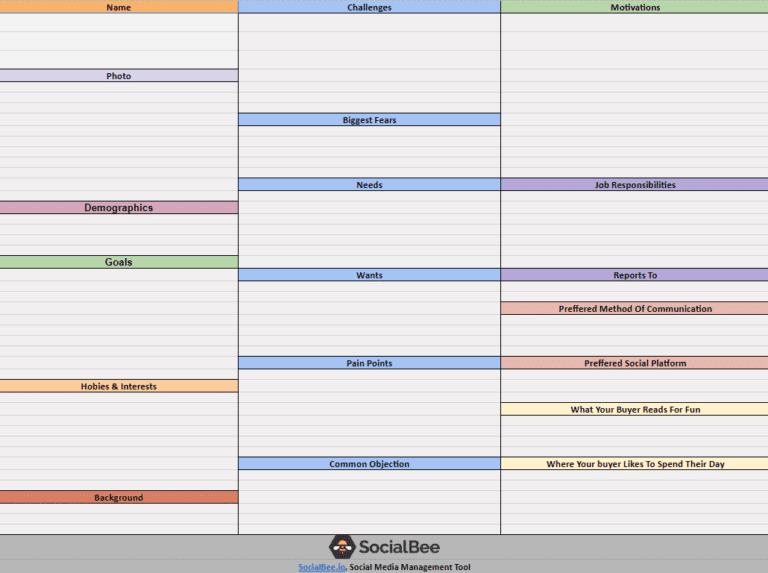
You can also dissect underperforming content to assess what’s not striking a chord with your followers. While popular posts will tell you what kind of posts people enjoy, you should also know what content formats or ideas to avoid.
Lastly, create a list of popular trends doing the rounds on different channels that week. Add it to your ideas bucket and act quickly to create a post around that trend.
For example, Poppi created the post below the next day of the Oscars and gained over 11k reactions.
That’s an example of how virality can be gained by tapping into new trends early.
2. Social Listening
Monitor conversations on social platforms to gauge your audience’s mood. Social listening tools can help you identify people’s likes, dislikes, pain points, sentiments, and expectations.
This exercise will also allow you to track customer complaints or requests on any channel.
3. Competitor Analysis
Keep tabs on your competitors and evaluate their content regularly to determine how to differentiate your brand.
Block time weekly to review your top competitors’ social activity and check out the top-performing posts. Then, brainstorm ways to one-up them with your strategy.
4. Constant Networking
To exchange ideas and drive awareness, you can also connect with a few thought leaders in your industry through outreach on LinkedIn.
You can either directly approach them in DMs or leave comments on a LinkedIn post from time to time, sharing your personal insights.
This organic networking activity will help build strong connections to launch partnerships with industry influencers and build a strong social media campaign in the future.
Social Media Checklist: Monthly Social Media Strategy Overhaul
Regularly updating your social media marketing plan is key to staying effective. In this section, we’ll walk you through the steps for a monthly review and update.
Here are two main social media activities to perform monthly:
- In-depth performance analysis and audience insights
- Profile optimization and strategic planning
1. In-depth Performance Analysis and Audience Insights
At the end of the month, you have to comprehensively review your performance across channels. A good practice is to build platform-specific reports to record key metrics like reach, engagement rate, click-through rate, overall traffic, conversion rate, and more.
You don’t have to simply document this data. It’s also important to visualize all the data for ease of understanding. Then, make strategic decisions based on these numbers.
Here’s an example of a monthly social media performance report. This is how you can visualize performance for different weeks, channels, and quarters.
But if doing all this analysis manually seems like too much hassle, you can use tools like SocialBee to automate reporting effortlessly.
SocialBee gives you a detailed dashboard analyzing every post’s performance and visualizing data for every week, month, and quarter. With this analytics dashboard, you can:
- Learn more about your audience demographics and distribution
- Pinpoint high-performing channels that can produce better results
- Get deeper visibility to optimize your content and posting schedule
Analyze your social media data with SocialBee!
2. Profile Optimization and Strategic Planning
Lean on your performance data to iterate your social media strategy for the coming months and quarters.
This data will show you the opportunities and gaps in your market, making your strategy more result-driven.
At the start of every month, you can dedicate some time to consolidate insights from competitor analysis, social listening tools, performance data, and other avenues.
Then, set clear goals for your content creation and engagement approach. You can also plan to hire more people for your social team or invest in the right tools to drive social media success.
Must-Have Tools for Maximizing Your Social Media Efficiency
Now that you have a clear game plan to build and execute your social media strategy, it’s time to build your tech stack. We’ve shortlisted four essential tools to make social media management a breeze.
With these four tools, you can cover all bases and create a successful social media strategy:
- SocialBee: An all-in-one social media management tool to help you with content creation, scheduling, engagement, and analytics. You can also use SocialBee’s Copilot (your AI social media assistant) to generate a customized social media strategy for your brand in minutes.
- Canva: A user-friendly graphic design tool with thousands of templates to create visual posts for any theme or occasion. You can make your brand kit for consistent branding. The tool also helps you create videos and GIFs, and schedule posts on different channels.
- VEED AI Video Generator: A feature-packed tool to create screen recording videos or make content with AI avatars. You can create and edit videos using multiple features like text-to-speech voiceover, text overlays, animations, and more.
- Mention: A social listening tool to get a pulse of your audience and stay ahead of the curve. You can constantly monitor what people say about a specific topic and quickly find brand mentions.
Social Media Best Practices and Pitfalls
With these actionable tips and tactics, you’re all set to create your own social media strategy. We’ve condensed all this advice into a handy checklist of best practices and pitfalls to consider for social media success.
1. How to Ensure Consistency on Social Media
TL;DR: Ensuring consistency on social media involves using social listening tools, leveraging user-generated content, experimenting with content formats, creating a content planner, and building a robust reporting engine.
Tip #1: To ensure consistency on social media, start by using social listening tools to identify emerging trends and opportunities within your market.
By staying attuned to what your target audience is talking about, you can tailor your content to align with their interests. Additionally, research keywords relevant to your industry to improve your visibility and engagement.
Tip #2: Leverage user-generated content (UGC) to build social proof and credibility for your brand. Encouraging your audience to create and share content related to your products or services not only provides you with fresh creative assets but also fosters a sense of community and trust.
Conducting regular audience analysis will help you understand which types of UGC resonate most with your followers.
Tip #3: Experiment with different content formats to discover what engages your audience on various platforms. Whether it’s videos, infographics, or stories, diversifying your content keeps your feed interesting and appealing.
Tip #4: Create a content plan to schedule posts consistently and identify the best times to post for maximum reach and engagement.
Tip #5: Finally, build a robust reporting engine using tools like SocialBee to analyze your weekly and monthly performance. This allows you to track the effectiveness of your strategies and make data-driven adjustments.
Regular performance reviews and audience analysis ensure that your social media efforts remain aligned with your goals and audience preferences.
2. Social Media Pitfalls to Avoid
TL;DR: Avoid common social media pitfalls by not engaging in hard selling, paying attention to engagement metrics and user feedback, staying updated on algorithm changes, posting consistently, and prioritizing video content marketing.
One of the biggest social media pitfalls to avoid is engaging in hard selling to the point where your content sounds spammy.
It’s important to promote your brand and products, but balance this with engaging and informative content.
Draw inspiration from relevant discussions and incorporate those insights into your content ideas to keep your audience interested and engaged. This approach not only fosters a connection with your followers but also aligns with your long-term business goals.
Ignoring engagement metrics and first-hand user feedback is another mistake. These insights are invaluable for tweaking your strategy to better meet your audience’s needs.
Pay attention to what works on other social media platforms as well, as these can offer inspiration and new content ideas. Staying responsive to feedback ensures that your social media efforts remain effective and relevant.
Finally, don’t overlook algorithm changes or post inconsistently. Social media algorithms frequently change, and sticking to the same strategy can hinder your visibility. Regularly update your approach to stay aligned with these changes.
Additionally, posting at random times can hurt your engagement; instead, use a content plan to post consistently at optimal times. Emphasize video content marketing as it continues to grow in popularity across all platforms, helping you engage a wider audience and drive better results.
Another critical pitfall is neglecting social media security. Use a team password manager for strong, unique passwords, enable two-factor authentication (2FA), regularly update passwords, and monitor account activity. Educate your team on security best practices, how SSO works, and limit account access to essential members to prevent hacking and unauthorized access, maintaining your social media integrity.
Frequently Asked Questions
The 5:3:2 rule for social media is a simple content sharing guideline:
- 5 x curated content: Share five pieces of content from others in your industry to provide value and showcase relevant information.
- 3 x original content: Post three pieces of content created by you, such as blog posts, videos, or infographics, to highlight your expertise.
- 2 personal content: Share two pieces that give a personal touch, like behind-the-scenes looks or team stories, to connect with your audience.
A social media plan should include:
- Goals: Define what you want to achieve (e.g., brand awareness, traffic, leads).
- Target audience: Identify who you are trying to reach.
- Social media audit: Understand where your social media marketing efforts are right now.
- Platform selection: Choose the best social media platforms for your audience.
- Content strategy: Plan the types of content you will post and how often.
- Content calendar: Schedule your posts to ensure consistency.
- Engagement plan: Outline how you will interact with your audience.
- Social media analytics: Decide which metrics to track for measuring success.
- Budget: Allocate funds for advertising and tools.
- Competitive analysis: Study your competitors’ social media strategies
The best social media strategy starts with clear goals and a deep understanding of your audience. Choose the platforms where your audience is most active and maintain consistent branding across all channels.
Then, create a social media calendar and share engaging content regularly and mix different types (e.g., articles, videos, infographics) to keep your audience interested.
You should also engage actively by responding to comments and messages to build a strong community. Track performance metrics to refine your strategy and stay flexible to adapt to new social media trends.
Last but not least, incorporate paid advertising to expand your reach and achieve specific objectives.
It’s Time to Tailor Your Approach on Social Media Platforms!
That’s a wrap on our comprehensive guide for social media marketing success. Bookmark this guide to build a roadmap for your daily, weekly, and monthly goals. This will make it easier to manage all the moving parts of a social media strategy.
And once you’ve done all the legwork to go into the execution mode, use SocialBee to plan and implement everything effortlessly. Sign up for a 14-day free trial to learn how.

About the author: Eduard Klein is an International Digital Growth Marketer, Blogger, and Online Business Coach with a global mindset. He guides through the process of starting and growing a digital business, and riding the wave of digital technology and marketing without getting swept away.

